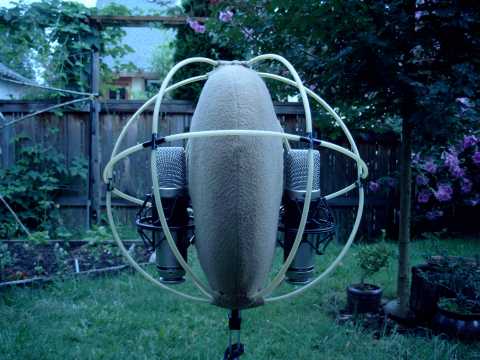

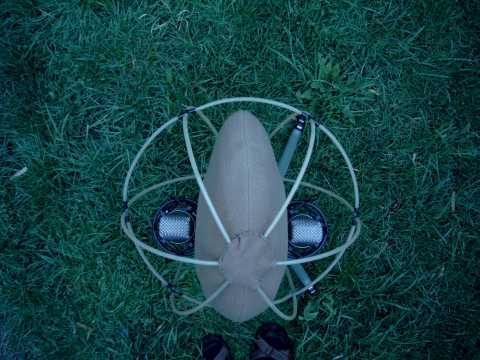
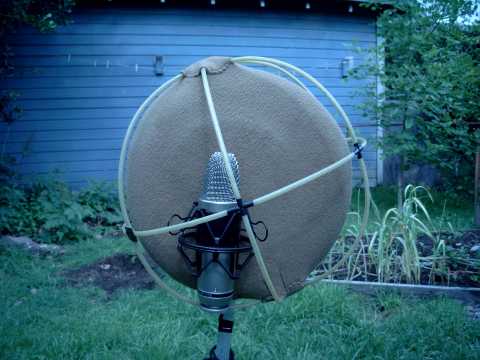
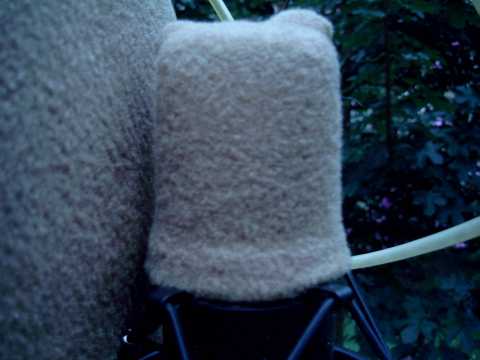
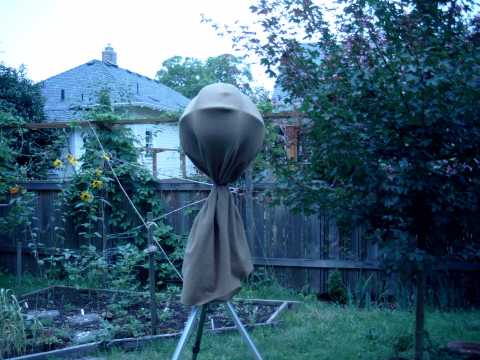
This configuration draws from a variety of barrier mic approaches such as the Jecklyn Disc, ORTF, the binaural dummy head, and other head-spaced arrangements. The greatest influences on the shape of the barrier were measurements of my own head, the size and shape of the microphones, and characteristics of whatever building materials I had on hand at the time.
The microphones are spaced approximately 7.5 inches apart and facing directly forward. The barrier allows for a variety of mic angles while still maintaining a nice background stereo image, however mic angles less than 60 degrees are recommended to avoid a "hole in the middle" effect.
Until I come up with a better solution, I am using the shockmounts that came with the microphones.
The shock mounts and barrier are supported by sections of 3/4 in.x 1/8 in. aluminum flat.
The windscreen cage shown is made from hoops of spring steel salvaged from a car windshield sunscreen and covered with rubber tubing. Recently, 2007, I switched to semi-rigid plastic tubing for cage material to solve some wind vibration issues.
The windscreen material is light weight, double sided, four way stretch fleece. I made covers for the microphones with the same material.
Here are a few recordings made with this setup and a Marantz PMD-670 recorder: